Results
-
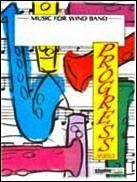 £13.95
£13.95YORKSHIRE OVERTURE, A (Progress Concert Band Extra Score) - Sparke, Philip
Extra Score. A brilliant example of Philip Sparke's mastery of wind band orchestration, bursting with rhythmic energy. Performance time 5'28" (Recorded on QPRM117D FESTIVAL OF MUSIC 1991 (Massed Bands of the Royal Air Force); QPRM153D MOSAIC: Great British Music for Wind Band Vol.13 (Royal Northern College of Music Wind Orchestra)
Estimated dispatch 7-14 working days
-
 £67.95
£67.95YORKSHIRE OVERTURE, A (Progress Concert Band) - Sparke, Philip
A brilliant example of Philip Sparke's mastery of wind band orchestration, bursting with rhythmic energy. Performance time 5'28" (Recorded on QPRM117D FESTIVAL OF MUSIC 1991 (Massed Bands of the Royal Air Force); QPRM153D MOSAIC: Great British Music for Wind Band Vol.13 (Royal Northern College of Music Wind Orchestra)
Estimated dispatch 7-14 working days
-
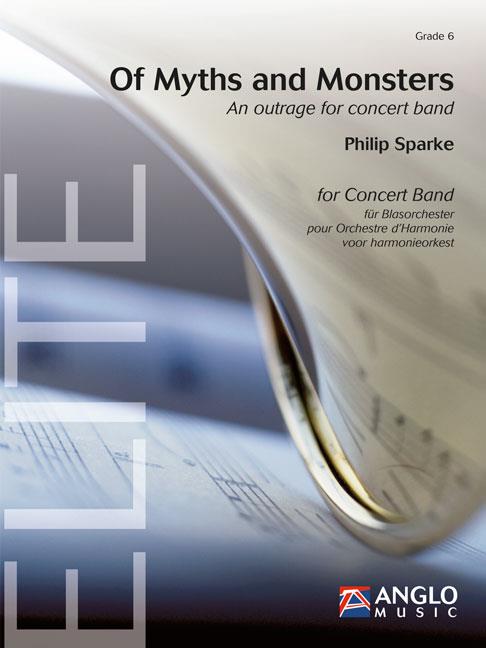 £378.99
£378.99Of Myths and Monsters (Concert Band - Score and Parts) - Sparke, Philip
Philip Sparke's Of Myths and Monsters links thematically to his work Music of the Spheres. The Hydra, Cassiopeia, Orion and Pegasus are the constellations and corresponding Greek myths depicted in this impressive three-movement work.Duration: 21:30
Estimated dispatch 7-14 working days
-
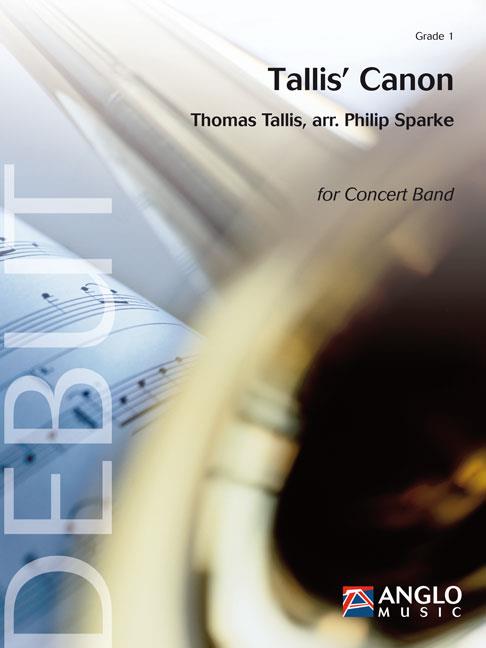 £68.99
£68.99Tallis' Canon (Concert Band - Score and Parts) - Tallis, Thomas - Sparke, Philip
The well-known 16th Century canon by Thomas Tallis is as effective as it is simple. This arrangement includes four verses of the melody: the first in the form of canon; the second for brass; the third for woodwind and the fourth for the entire orchestra. Philip Sparke's arrangement is also well suited for incomplete brass ensembles.Duration: 2:30
Estimated dispatch 7-14 working days
-
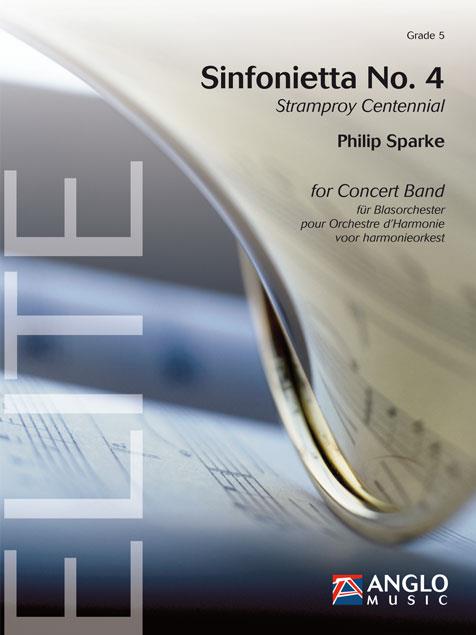 £306.99
£306.99Sinfonietta No.4 (Concert Band - Score and Parts) - Sparke, Philip
Philip Sparke's Sinfonietta No. 4 is comprised of three parts that are played as an uninterrupted whole. The first movement begins with a lyrical fugato passage, framing a brisker and more rhythmical middle section. The second movement is slower and contains a long and expressive euphonium solo. The third movement is a salute to the sponsor of this commission: various percussion instruments conjure up sounds reminiscent of a carpenter's workshop, accompanied by a unison orchestral passage in a scat style.Duration: 18:45
Estimated dispatch 7-14 working days
-
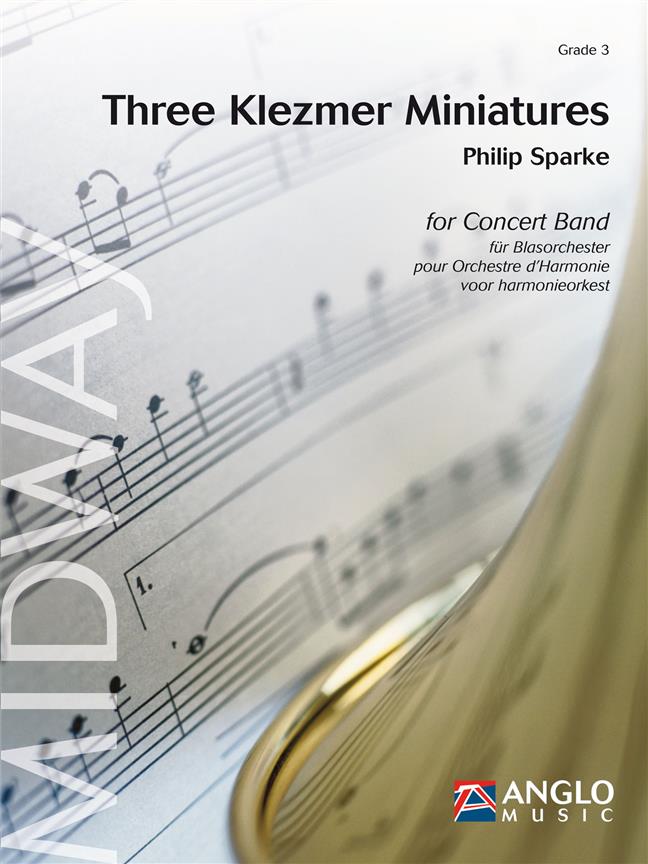 £141.99
£141.99Three Klezmer Miniatures (Concert Band - Score and Parts) - Sparke, Philip
Three Klezmer Miniatures is Philip Sparke's third work based on traditional Jewish klezmer melodies, after Shalom and A Klezmer Karnival. Klezmer music originated in the shtetl (villages) and ghettos of Eastern Europe, where itinerant Jewish troubadours, known as klezmorim, had performed at celebrations, particularily weddings, since the early Middle Ages. Three Klezmer Miniatures uses the following traditional tunes:Sham Harei Golan (There are the mountains of Golan) and Nigun Shel Yossi, a circle dance.Tumbalalaika, a Russian Jewish love song.Hava Nagila, the most famous of all Jewish folk dances; the title means "let us rejoice."Duration: 7:00
Estimated dispatch 7-14 working days
-
 £137.99
£137.99Strathcarron (from Hymn of the Highlands) (Concert Band - Score and Parts) - Sparke, Philip
Sword Dance from Hymn of the HighlandsStrathcarron is a movement from Philip Sparke's Hymn of the Highlands, in which each movement reflects a different location in the beautiful Scottish highlands. Stratcarron, named after a village at the head of Loch Carron, near the Isle of Skye, takes the form of a sword dance which alternates between fast and slow tempi.Duration: 5:40
Estimated dispatch 7-14 working days
-
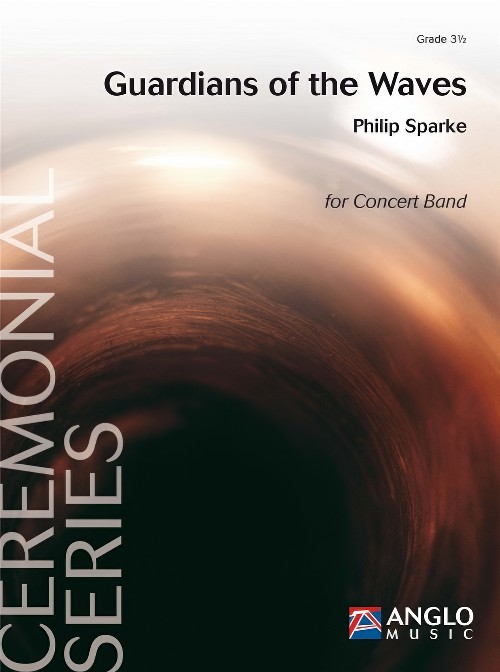 £91.99
£91.99Guardians of the Waves (Concert Band - Score and Parts) - Sparke, Philip
Guardians of the Waves was commissioned by the Japan Coast Guard Band to celebrate their 30th anniversary in 2018. They gave the premiere as part of a 30th anniversary concert on November 8th that year. Set in traditional march form, Guardians of the Waves opens with a short introduction, which leads to the main theme, played initially by the brass and then repeated with a florid woodwind descant. The theme is extended and morphs into a second theme, first played tutti and then quietly repeated by bassoon, tenor sax and euphonium. This leads to a conventional 'bass strain', played twice with varying accompaniments. A quieter trio section follows, delicately scored and featuring the tenor instruments of the band. Taken up by the full band, this leads back to a recall of the introduction and a return to the main two themes, which lead to a triumphal close. Duration: 4.00
Estimated dispatch 7-14 working days
-
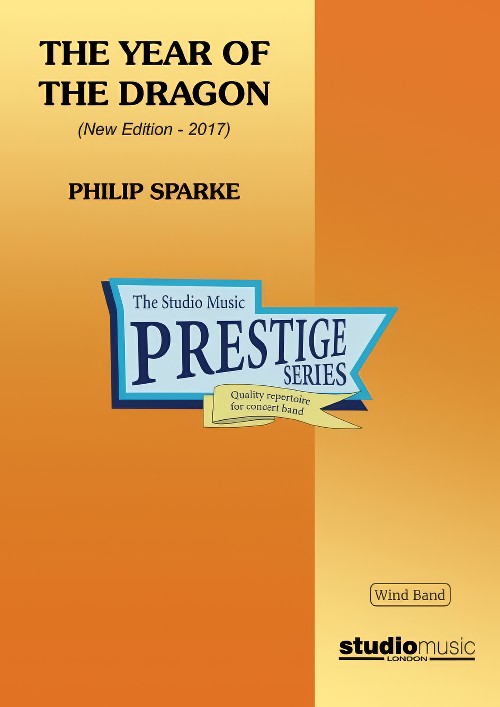 £37.95
£37.95The Year of the Dragon (Prestige Concert Band - Score only) - Sparke, Philip
The 2017 version of The Year of the Dragon was commissioned by the Siena Wind Orchestra and given its world premiere on June 17th 2017 in Bunkyo Civic Hall, Tokyo, conducted by the composer.The original wind band arrangement of The Year of the Dragon was made in 1985, a year after the composer wrote the brass band version. At that time he was still learning the intricacies of writing for wind band (and still is!) and in the 32 years which have elapsed since then, his approach to scoring for the medium has developed and, hopefully, improved.Here are the main differences between the two versions:In the 1980's, the wind band movement was much less international than it is now. British wind bands were still to some extent based on the military band tradition of the time, which tended to use rather smaller instrumentation than the then-dominant American university model. The new version embraces a much more international instrumentation, including low woodwinds and string bass, as well as an expanded percussion section.In the original version there was a touch of naivety in the way the composer wrote for the woodwinds; much of their articulation was transferred too literally from the brass version, resulting in some unidiomatic writing, which he has tried to improve in the new version.In addition to the above, Philip's own compositional style has matured and developed in the intervening 32 years. There are some passages in the original which he simply would not write today - not because they are 'wrong', but because his way of writing has changed. The new version is perhaps how he would have written it today, rather than simply dressing the original version in new clothes.The work is in three movements:Toccata opens with an arresting side drum figure and snatches of themes from various sections of the band, which try to develop until a broad and powerful theme from the middle of the band asserts itself. A central dance-like section soon gives way to the return of this theme, which subsides until faint echoes of the opening material fade to a close.Interlude takes the form of a sad and languid solo for alto saxophone. A chorale for the whole band introduces a brief spell of optimism but the saxophone solo returns to close the movement quietly.Finale is a real tour-de-force for the band with a stream of rapid semi-quavers running throughout the movement. The main theme is heroic and march-like but this is interspersed with lighter, more playful episodes. A distant fanfare to the sound of bells is introduced and this eventually returns to bring the work to a stirring close.
Estimated dispatch 7-14 working days
-
 £199.95
£199.95The Year of the Dragon (Prestige Concert Band - Score and Parts) - Sparke, Philip
The 2017 version of The Year of the Dragon was commissioned by the Siena Wind Orchestra and given its world premiere on June 17th 2017 in Bunkyo Civic Hall, Tokyo, conducted by the composer.The original wind band arrangement of The Year of the Dragon was made in 1985, a year after the composer wrote the brass band version. At that time he was still learning the intricacies of writing for wind band (and still is!) and in the 32 years which have elapsed since then, his approach to scoring for the medium has developed and, hopefully, improved.Here are the main differences between the two versions:In the 1980's, the wind band movement was much less international than it is now. British wind bands were still to some extent based on the military band tradition of the time, which tended to use rather smaller instrumentation than the then-dominant American university model. The new version embraces a much more international instrumentation, including low woodwinds and string bass, as well as an expanded percussion section.In the original version there was a touch of naivety in the way the composer wrote for the woodwinds; much of their articulation was transferred too literally from the brass version, resulting in some unidiomatic writing, which he has tried to improve in the new version.In addition to the above, Philip's own compositional style has matured and developed in the intervening 32 years. There are some passages in the original which he simply would not write today - not because they are 'wrong', but because his way of writing has changed. The new version is perhaps how he would have written it today, rather than simply dressing the original version in new clothes.The work is in three movements:Toccata opens with an arresting side drum figure and snatches of themes from various sections of the band, which try to develop until a broad and powerful theme from the middle of the band asserts itself. A central dance-like section soon gives way to the return of this theme, which subsides until faint echoes of the opening material fade to a close.Interlude takes the form of a sad and languid solo for alto saxophone. A chorale for the whole band introduces a brief spell of optimism but the saxophone solo returns to close the movement quietly.Finale is a real tour-de-force for the band with a stream of rapid semi-quavers running throughout the movement. The main theme is heroic and march-like but this is interspersed with lighter, more playful episodes. A distant fanfare to the sound of bells is introduced and this eventually returns to bring the work to a stirring close.
Estimated dispatch 7-14 working days
